What To See In Hanoi Old Quarter In One Day?

Hanoi Old Quarter, also known as Hanoi 36 streets is the soul of Hanoi, a destination not to be missed for tourists who love and want to explore Vietnamese culture. With this article, Autour Asia will share so you can have more useful information for your upcoming trip to Vietnam.
Table of Contents
I. Introduction general about Hanoi Old Quarter
1. Where is the Old Quarter?
Nestled alongside the tranquil Hoan Kiem Lake, amid the timeless Long Bien Bridge, weathered city walls, and a commanding citadel, Hanoi Old Quarter unfurls as a captivating mosaic steeped in Vietnamese legacy. This bustling network of 36 interlinked streets breathes the vibrant soul of the city's cultural heritage. Within this labyrinth, a thriving community of artisans, traders, and proprietors proudly upholds Hanoi's rich traditions. What sets this quarter apart is its unique nomenclature - each street bears the prefix "Hang," signifying a connection to commerce. Remarkably, every street specialises in goods and wares aligned with its name, offering an immersive journey through specialised products and local treasures.
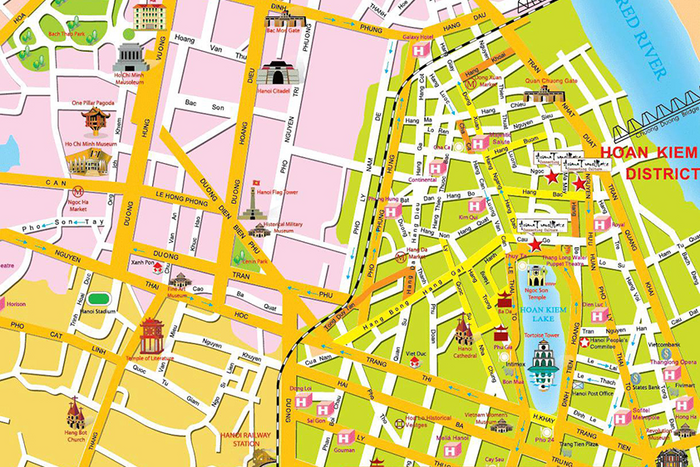
2. History of this Vietnam’s heritage
The origins of Hanoi 36 streets can be traced back to the Ly Dynasty (1009-1225), when King Lý Thái Tổ relocated the capital of Vietnam from Hoa Lu to Thang Long (Hanoi's ancient name). The city quickly grew and developed, becoming a centre of commerce and trade. The Old Quarter, located on the banks of the Red River, was home to merchants and artisans from all over Vietnam, who specialised in a variety of crafts, including silk weaving, pottery, and metalworking.
During the French colonial period (1887-1954), Hanoi Old Town underwent significant changes. The French authorities imposed their architectural style on the city, constructing wide boulevards and modern buildings. However, the Old Quarter largely retained its traditional character, with its narrow streets, shophouses, and temples. The French also introduced new industries to Hanoi, such as textiles and printing, which further contributed to the city's economic growth. After Vietnam gained independence from France in 1954, Hanoi Old Quarter continued to thrive as a commercial and cultural hub. The city's traditional crafts and trades were revived, and new businesses emerged. The Old Quarter also became a centre for resistance against the American War in Vietnam, with many residents providing support to the Viet Cong.
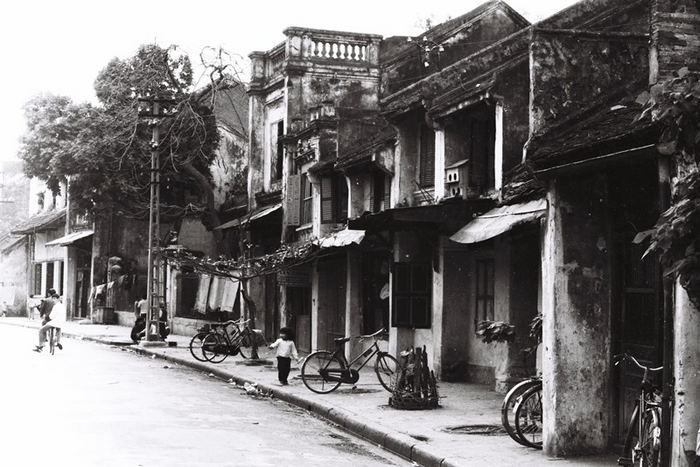
Today, Hanoi 36 streets is a vibrant and most sought after destination. Visitors come from all over the world to experience the city's unique atmosphere, explore its historic sites, and sample its delicious street food. The Old Quarter is also home to a growing number of art galleries, cafes, and restaurants, reflecting Hanoi's dynamic and evolving culture.
3. How to get there?
To reach this captivating destination, you can choose from a variety of transportation options, each offering its unique advantages:
a. Motorbikes and Taxis
- For quick and convenient transportation to Hanoi Old Town, consider motorbike taxis or taxis. Motorbike taxis (xe ôm) are widely available and offer affordable rides. Taxis provide a comfortable travel experience.
- Grab App: Book taxis seamlessly using the Grab app, similar to Uber. Install the app, create an account, and enjoy easy bookings.
- SM Green Electric Taxi: Opt for eco-friendly SM Green Electric Taxi. Install their app or call (+84) 19002088 for a ride. Their fares are relatively cheaper than other taxi services in Vietnam.
b. Metro
For a clean, safe, and comfortable travel experience, consider the Hanoi Metro. With one line extending from Ha Dong to Cat Linh station in Dong Da district, covering approximately 13 kilometres, the metro offers a convenient and modern mode of transportation.
c. Buses
Hanoi boasts a well-connected network of buses and green electric buses, providing comprehensive coverage throughout the city. Choose from a variety of routes to reach your desired destination, enjoying a reliable and affordable transportation option.
II. What places to visit?
1. Hoan Kiem Lake et Ngoc Son temple
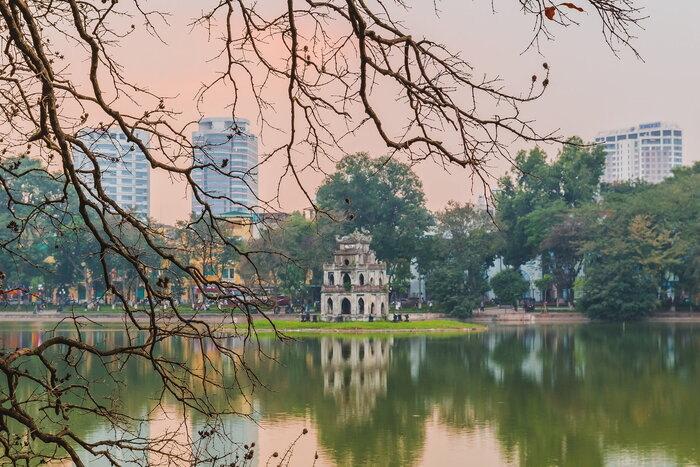

2. Dong Xuan Market
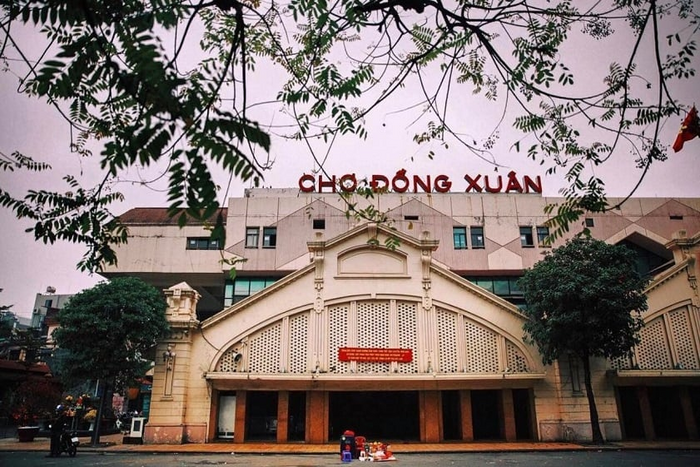
3. Bach Ma Temple
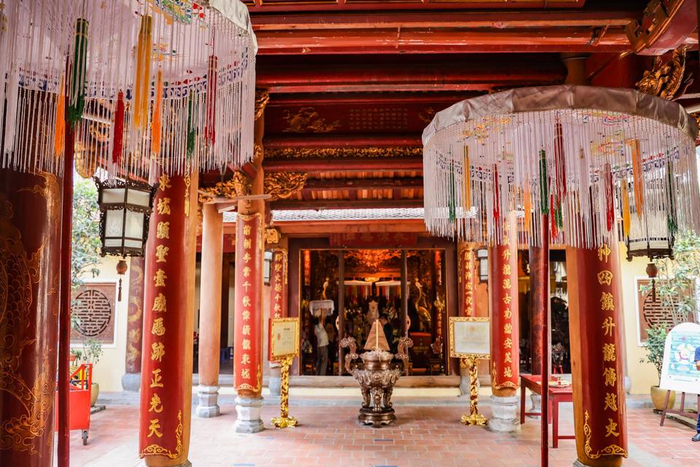
4. Ta Hien Street

Maybe you are interested: Top best places to visit in Hanoi
III. What to eat in the ancient town of Hanoi?
1. Pho

2. Bun Cha

3. Street Food

IV. Top useful tips for your trip to the ancient town of Hanoi
Currency Exchange: The official currency in Vietnam is the Vietnam Dong. Look for Currency Exchange stations in tourist areas or city centres to exchange your money. Doing so within Vietnam usually provides better rates compared to exchanging abroad.
Crossing the road: Because Hanoi's streets are very bustling and there are many vehicles, no run & just walk slowly, keep your eyes to the left and right and walk slowly. No run or you will be hit by motorbikes and cars.
Respect the locals and their culture & environment. This includes dressing appropriately asking permission before taking photos, and not littering or damaging the property of the locals
Related travel guide
Other similar articles
CUSTOMIZABLE BY LOCAL EXPERTS
Personalized trip at the original price!
REFUND GUARANTEE
We believe in our work and promise to give you money back.
GOOD PRICE / QUALITY
95% satisfied more than expected!
24/7 LOCAL SUPPORT
We are always available online to provide assistance at any time.
Most read articles
Autour Asia is highly recommended on
Embracing the mission of "Satisfied more than expected" and providing authentic experiences, we have received numerous recommendations on reputable travel forums:























